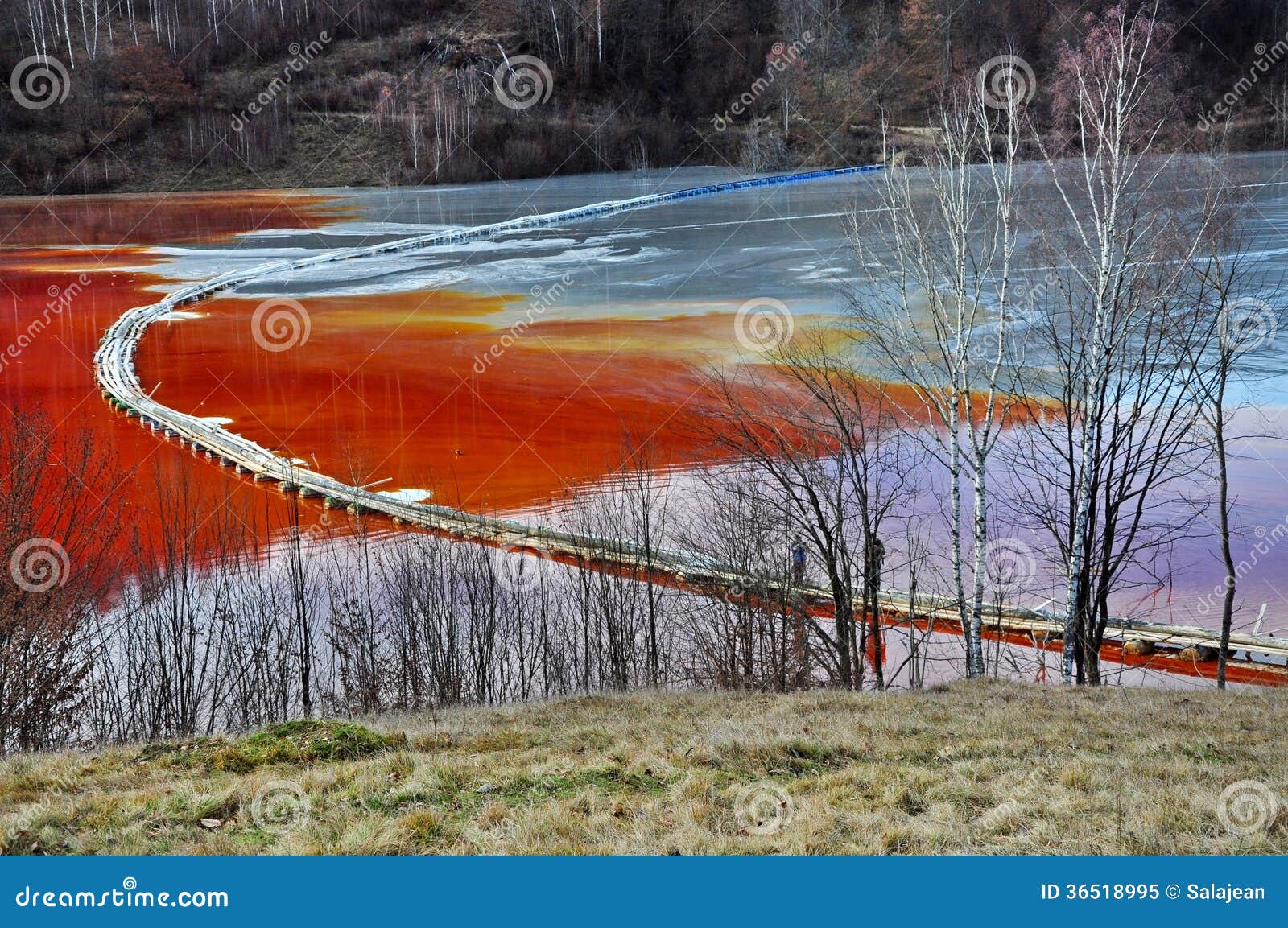Environmental Contamination: A Legacy Of Abandoned Gold Mines

Table of Contents
The Toxic Cocktail of Abandoned Gold Mines
Abandoned gold mines release a dangerous cocktail of pollutants into the environment, creating long-lasting and widespread contamination. These pollutants pose severe risks to both ecological health and human well-being.
Heavy Metals: A Silent Threat
Gold mining often involves the use of highly toxic heavy metals such as mercury, arsenic, lead, and cyanide. These substances persist in the environment, accumulating in the food chain through a process called bioaccumulation.
- Mercury: Used in gold extraction, mercury contaminates water sources, impacting aquatic life and entering the human food chain through the consumption of fish. Symptoms of mercury poisoning include neurological damage and developmental problems.
- Arsenic: A common contaminant in gold ores, arsenic leaches into soil and water, causing skin lesions, cancers, and cardiovascular problems.
- Lead: Another heavy metal frequently associated with gold mining, lead contamination can lead to developmental delays in children and neurological problems in adults.
- Cyanide: Used in gold processing, cyanide is acutely toxic to humans and wildlife, causing respiratory failure and death even in small doses. Its persistence in the environment poses a long-term risk.
Acid Mine Drainage (AMD): A Corrosive Legacy
Acid mine drainage (AMD) is a severe environmental problem resulting from the oxidation of sulfide minerals exposed during mining activities. This process lowers the pH of water, making it highly acidic and releasing heavy metals into surrounding water bodies.
- Low pH: The acidic water harms aquatic life, destroying sensitive ecosystems and making the water unsuitable for human consumption.
- Dissolved Metals: AMD releases dissolved heavy metals, such as iron, zinc, copper, and manganese, further contaminating water and soil.
- Remediation Strategies: AMD remediation techniques include passive methods like wetlands and active methods like chemical neutralization. However, these are often expensive and complex.
Sediment Contamination: A Spreading Problem
Sediment runoff from abandoned mine sites carries heavy metals and other contaminants downstream, impacting water quality over large areas.
- Siltation: Increased sediment levels clog waterways, harming aquatic habitats and reducing water quality.
- Metal Transport: Sediment acts as a carrier, transporting heavy metals far from the original mine site, expanding the area of contamination.
- Ecosystem Disruption: Sediment contamination affects aquatic and terrestrial ecosystems, damaging habitats and affecting biodiversity.
Long-Term Environmental Consequences
The environmental damage caused by abandoned gold mines is long-lasting and far-reaching, affecting multiple aspects of the ecosystem and human health.
Biodiversity Loss: A Devastating Impact
Pollution from abandoned gold mines causes significant biodiversity loss. Contaminated water and soil destroy habitats, leading to population declines and even extinctions of sensitive species.
- Aquatic Life: Acid mine drainage and heavy metal contamination decimate fish populations and other aquatic organisms.
- Terrestrial Life: Soil contamination affects plant growth, impacting terrestrial ecosystems and the animals that rely on them.
- Endangered Species: Many endangered species are particularly vulnerable to the impacts of abandoned mine contamination.
Soil Degradation: A Threat to Food Security
Heavy metal contamination renders soil infertile, impacting agricultural productivity and long-term land use.
- Reduced Crop Yields: Contaminated soil produces lower crop yields, threatening food security in affected areas.
- Land Degradation: Heavy metals inhibit plant growth, making the land unsuitable for agriculture or other uses.
- Long-Term Impacts: Soil remediation is a slow and expensive process, leaving the land unusable for extended periods.
Human Health Impacts: A Serious Concern
Exposure to contaminated water, soil, and air near abandoned mines poses serious health risks to nearby communities.
- Waterborne Diseases: Consumption of contaminated water can cause various waterborne diseases.
- Respiratory Problems: Inhalation of contaminated dust can cause respiratory illnesses.
- Heavy Metal Poisoning: Exposure to heavy metals can lead to a range of health problems, including developmental delays, neurological disorders, and cancers.
Remediation and Mitigation Strategies
Addressing the environmental contamination from abandoned gold mines requires a comprehensive and multi-faceted approach.
Remediation Techniques: Cleaning Up the Mess
Various techniques are available for cleaning up contaminated sites, each with its own costs and effectiveness.
- Phytoremediation: Using plants to absorb and remove contaminants from soil and water.
- Bioremediation: Employing microorganisms to break down contaminants.
- Physical Removal: Excavating and removing contaminated soil or sediment.
Prevention and Responsible Mining Practices: A Proactive Approach
Preventing future contamination is crucial. Responsible mining practices, including proper waste management and water treatment, are essential.
- Stricter Regulations: Implementing and enforcing stricter environmental regulations for mining operations.
- Sustainable Mining Techniques: Adopting sustainable mining techniques that minimize environmental impact.
- Mine Closure Plans: Developing comprehensive mine closure plans that address potential environmental hazards.
Community Involvement and Education: A Shared Responsibility
Engaging local communities in remediation efforts and raising awareness about the risks associated with abandoned gold mines is vital.
- Community Participation: Involving local communities in decision-making processes related to mine remediation.
- Education and Awareness: Educating communities about the risks of abandoned mine contamination and promoting responsible behavior.
- Health Monitoring: Implementing health monitoring programs to assess the health impacts of mine contamination.
Conclusion
The environmental contamination stemming from abandoned gold mines represents a significant and ongoing challenge. The toxic legacy of these sites, including heavy metal pollution, acid mine drainage, and sediment contamination, poses severe threats to ecosystems and human health. Addressing this issue requires a multi-faceted approach, encompassing remediation efforts, the implementation of responsible mining practices, and community engagement. By actively pursuing remediation and prevention strategies, we can strive to mitigate the long-term impacts of abandoned gold mines and protect our environment from further environmental contamination. We must act now to prevent future environmental contamination caused by irresponsible gold mining practices. Let's work together to find effective solutions for managing and mitigating the legacy of abandoned gold mines.

Featured Posts
-
 Experience The Exclusive Vibe A Night Out Inspired By Nile Rodgers I M Coming Out
May 06, 2025
Experience The Exclusive Vibe A Night Out Inspired By Nile Rodgers I M Coming Out
May 06, 2025 -
 Remediation Challenges Cleaning Up Abandoned Gold Mine Pollution
May 06, 2025
Remediation Challenges Cleaning Up Abandoned Gold Mine Pollution
May 06, 2025 -
 Miley Cyrus Flowers Recenzja Pierwszego Singla Z Nowej Plyty
May 06, 2025
Miley Cyrus Flowers Recenzja Pierwszego Singla Z Nowej Plyty
May 06, 2025 -
 Pooja Bhatts Bold Style Inspired By Demi Moores 1991 Photoshoot
May 06, 2025
Pooja Bhatts Bold Style Inspired By Demi Moores 1991 Photoshoot
May 06, 2025 -
 Fortnite Where To Find Sabrina Carpenters Outfits
May 06, 2025
Fortnite Where To Find Sabrina Carpenters Outfits
May 06, 2025
